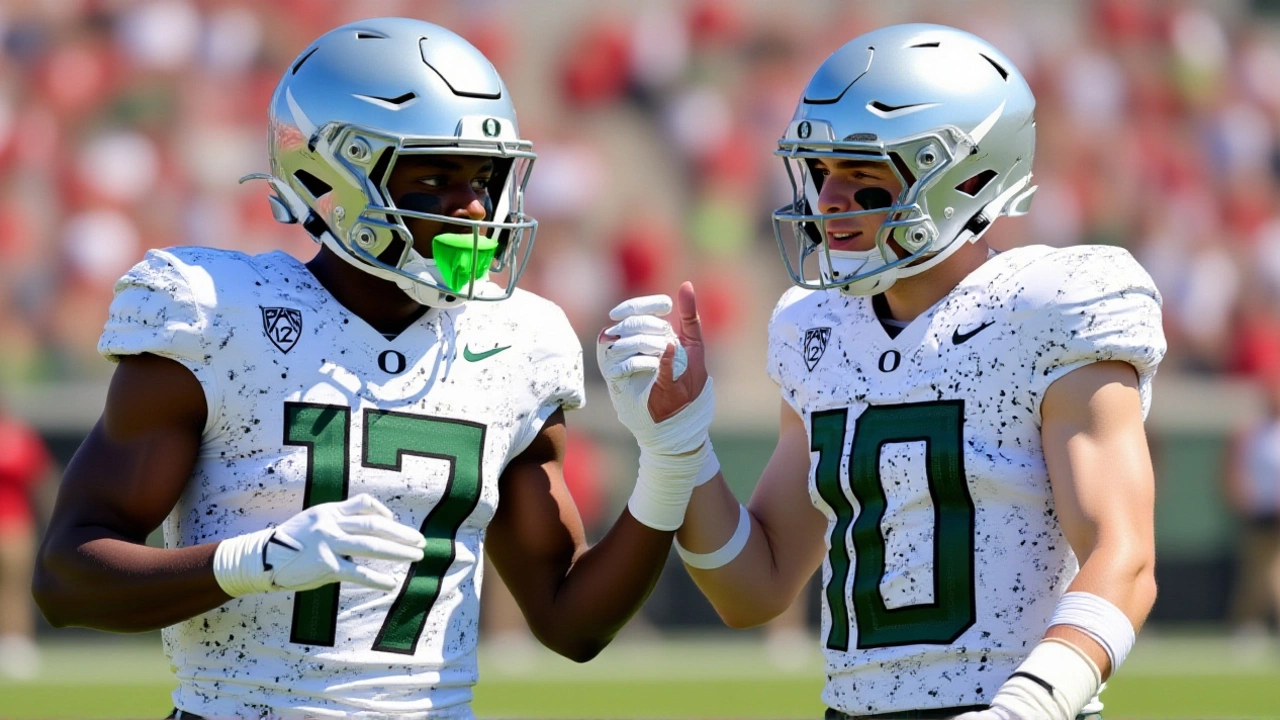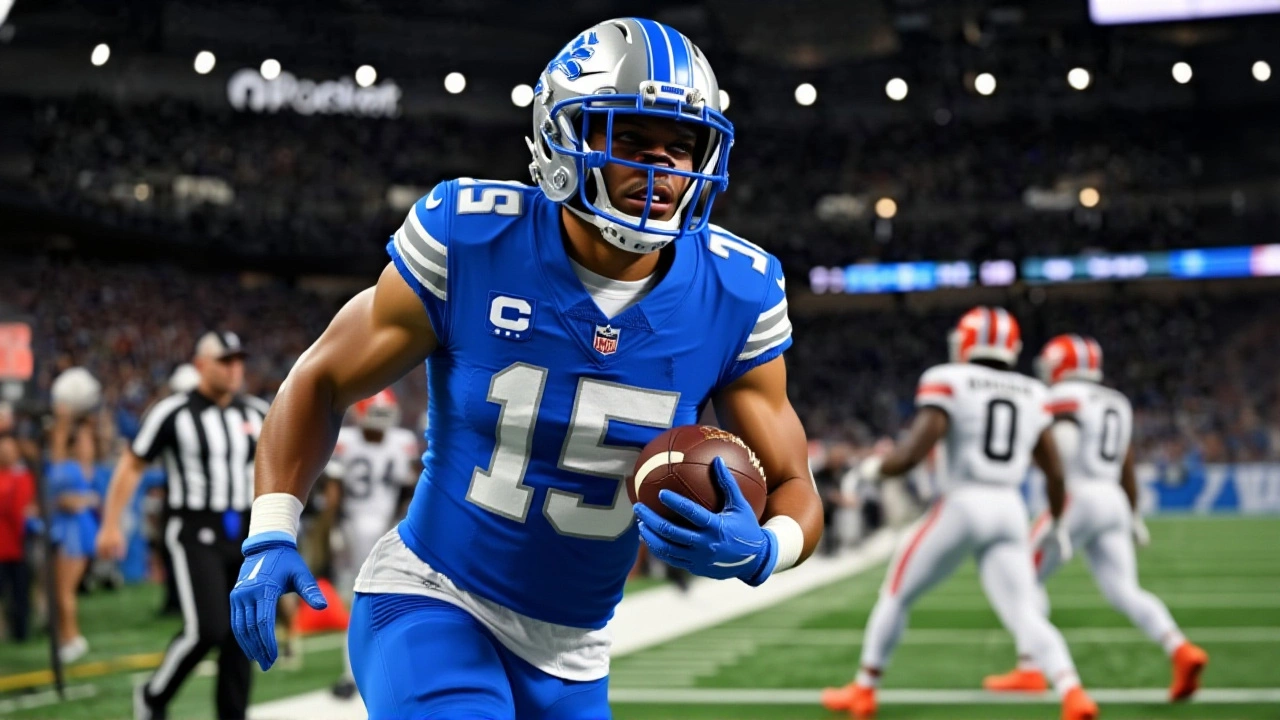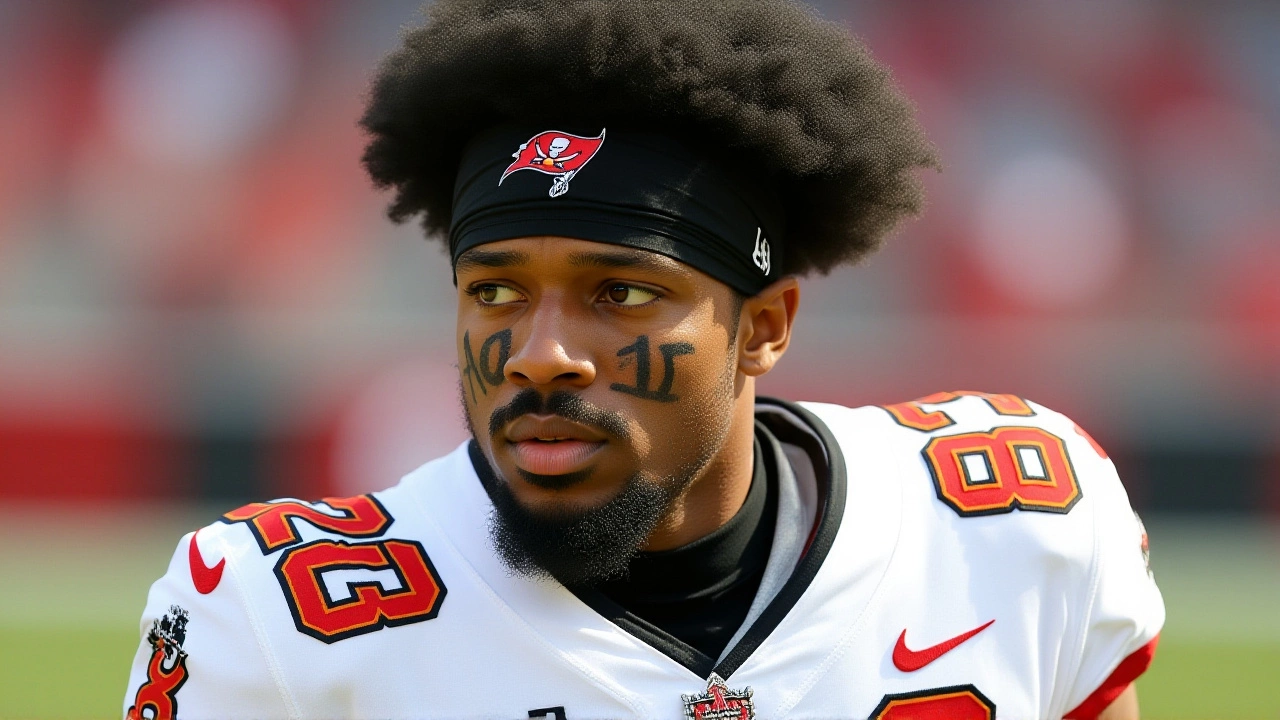When Sterling Shepard, the nine‑year veteran wide receiver for the Tampa Bay Buccaneers, publicly declared that seventh‑round rookie Tez Johnson has future star potential, it sent a noticeable jolt through a locker room already feeling the strain of injuries. The endorsement came on October 18, 2025, during a routine media day at the club’s AdventHealth Training Center in Tampa, Florida, and it couldn’t have arrived at a more critical moment.
Rookie’s Rise Amid a Crisis of Injuries
Johnson’s path to this point has been anything but ordinary. Drafted 259th overall in the seventh round of the 2025 NFL Draft, the Oregon product stepped into a Buccaneers receiving corps missing two of its marquee players: Mike Evans, sidelined with a hamstring issue, and Chris Godwin, out with a knee injury. By Week 6, Johnson had logged six receptions on ten targets for 112 yards and his first NFL touchdown, a 19‑yard strike in a 23‑17 win over the San Francisco 49ers at Raymond James Stadium.
Those numbers may look modest on paper, but the efficiency tells a different story. Fantasy analysts at FantasyPros noted an 18.7‑yard average per catch, eclipsing Shepard’s 12.7‑yard figure. In the same vein, Johnson posted 21.3 fantasy points per 100 snaps versus Shepard’s 20.8, a gap that grew as the rookie consistently turned limited looks into big gains.
Shepard’s Mentorship and Veteran Insight
Shepard, who entered the league as a second‑round pick of the New York Giants in 2016, has taken Johnson under his wing from day one. “If you can earn the respect of a guy who’s been around the league as long as Steele (Shepard’s nickname) does, you’re already halfway to making a name for yourself,” Johnson said in a post‑game interview.
Shepard’s own numbers have been solid despite a reduced role: 19 receptions on 27 targets for 242 yards and one touchdown through six games. Yet his willingness to publicly back a seventh‑round rookie is rare. “I’ve seen a lot of guys come and go, but Tez has that blend of route running and after‑catch toughness you just can’t teach,” Shepard told Yardbarker, citing the rookie’s college experience as the catalyst for his optimism.
Statistical Comparison and Fantasy Impact
- Target share: Johnson – 10 of 58 total Buccaneers targets (17%); Shepard – 27 of 58 (47%).
- Yards per reception: Johnson – 18.7; Shepard – 12.7.
- Fantasy points per 100 snaps: Johnson – 21.3; Shepard – 20.8.
- Touchdowns: Johnson – 1 (Week 6); Shepard – 1 (Week 4).
RotoBaller’s October 19 waiver‑wire analysis highlighted Johnson’s perfect catch rate in Week 5 – four receptions on four targets for 59 yards – as a clear indication that the rookie is not just a filler. Meanwhile, Shepard’s consistency, with at least three targets in every game, keeps him a reliable backup as the team navigates the injury carousel.

Buccaneers’ Offensive Scheme and Future Role
Head coach Todd Bowles and offensive coordinator Liam Coen have leaned heavily on multi‑receiver sets that favor slot players – a system that dovetails perfectly with the skill set Johnson honed at the University of Oregon. During his final two Ducks seasons, Johnson posted 2,080 receiving yards and 20 touchdowns, acting as the go‑to target for Heisman‑finalist quarterbacks Bo Nix (2023) and Dillon Gabriel (2024).
Coen’s play‑calling this season emphasizes three‑wide and four‑wide formations that keep the slot open for speedsters. Johnson’s 4.42‑second 40‑yard dash and 6‑foot‑1, 195‑pound frame give him the burst needed to separate in those quick‑hitting routes. Bowles hinted in a press conference on October 13 that the staff plans to increase Johnson’s snap count once Evans and Godwin return, citing the rookie’s “high‑football IQ” and “ability to make plays in traffic.”
Oregon Roots and College Success
The Ducks’ offense was a top‑10 powerhouse in 2023‑24, repeatedly ranking among the nation’s most explosive units. Under offensive coordinator Kenny Dillingham in 2023 and later Jim Mora in 2024, Johnson refined the route‑tree details that now serve him in the NFL. His chemistry with Nix and Gabriel translated into clutch moments; both quarterbacks threw for over 3,000 yards each season, with Johnson accounting for roughly 20% of total passing yards.
Back in Eugene, the Ducks are already feeling his absence. Freshman receiver Dakorien Moore has stepped into the slot, tallying 335 yards and two touchdowns through six games, but the Ducks fell 27‑20 to Indiana on October 18, a loss that nudged their Big Ten Championship odds down, according to Sports Illustrated.

What This Means for the Rest of the Season
If the Buccaneers can keep their injury list manageable, Johnson’s role could evolve from a situational deep‑threat to a reliable third‑option receiver. The fantasy community is already reacting: 87% of 111 experts surveyed by FantasyPros said they would draft Johnson over Shepard in a standard league. That sentiment, coupled with Bowles’ openness to creative play‑calling, suggests the rookie may see his target share climb into the 15‑20% range by season’s end.
For Shepard, the endorsement serves a dual purpose – it validates his mentorship and ensures he remains valuable as a veteran presence. Even if Evans and Godwin return to full health, the Buccaneers will likely retain a three‑wide rotation, giving both veterans and the budding star a chance to contribute.
Frequently Asked Questions
How does Tez Johnson’s emergence affect the Buccaneers’ receiving depth?
Johnson provides a quick, reliable slot option that offsets the loss of Mike Evans and Chris Godwin. His 18.7‑yard per catch average means the team can stretch defenses even with fewer deep threats, allowing coach Bowles to run more versatile pass concepts.
What did Sterling Shepard say about Johnson’s potential?
Shepard told Yardbarker that Johnson has “that blend of route running and after‑catch toughness you just can’t teach,” and added that earning a veteran’s respect is a strong indicator of long‑term success.
Will Johnson stay on the roster if Evans and Godwin return?
Even with Evans and Godwin healthy, the Buccaneers’ three‑wide sets under Liam Coen keep three active receivers on the field. Johnson’s efficiency and the coaching staff’s confidence suggest he will remain a regular target rather than a fringe player.
How did Johnson perform at the 2025 Pro Day?
He ran a 4.42‑second 40‑yard dash and posted a 33‑inch vertical, confirming the speed and athleticism that made him a coveted slot receiver at Oregon and now in the NFL.
What impact did Johnson’s departure have on Oregon’s offense?
Without Johnson, the Ducks fell 27‑20 to Indiana, and sophomore Dakorien Moore has struggled to replicate his production, causing a dip in the Ducks’ slot‑receiver efficiency and slightly lowering their Big Ten championship odds.
